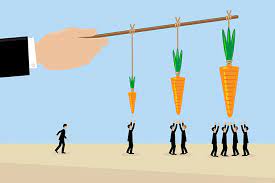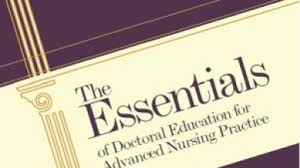Culture Responsive Leadership
Culture responsive leadership is essential in every institution as it responds and acknowledges the need for equitable access to education for people of all kinds as well as shaping people’s thinking process. Culture responsiveness would entail strategies to incorporate and improve links between equity and access to education between linguistically diverse communities (Toppel, 2015).
Cultural competence should be intertwined with responsiveness as it enhances better integration of skills, values, attitudes, and knowledge to ensure effective interventions with people from diverse cultures. Culture responsiveness is crucial in empowering students politically, socially, intellectually and emotionally by using of referents of culture to impart skills and knowledge.
Culture responsive leadership is essential in influencing various factors such as equity, outcomes and opportunity in a given educational setting. Culture responsive leadership involves philosophies, policies, and practices that inclusively create better learning environments for populations of culturally and ethnically diverse backgrounds (Toppel, 2015). The creation of a culture responsive relationship by the leaders is vital as it helps them make concerted efforts to identify more about the culture and interests of those under them especially students in an education setting.
I had the privilege to interview two people who gave more insight into the issue of culture-responsive leadership. The interview seeks to identify some of the practices adopted by the leaders in enhancing that the policies they use are culture responsive. My first interviewee is a male leader in a university. The interviewee serves in the leadership capacity as a dean of the university who is in charge of the student’s affairs.
He also has the role of overseeing the formulation and implementation of policies that promote culture responsive teaching in the learning institution (McCray et al, 2011). The dean is also responsible for the coordinated planning of the right curriculum to ensure full culture responsiveness.
The second person I interviewed is the chancellor of the University who also doubles up as an organizing secretary of the education board of various private and public universities. She performs both the leadership and managerial roles in all programs started to enhance culture responsive education at the university level. She ensures that the structures are properly made, and procedures followed as well as receiving progress reports from leaders in lower levels such as the university dean. Both leaders adequately provided the required information regarding culturally responsive leadership practices.
The following questions were used to interview both interviewees who work in a similar capacity as their main role is the promotion of policies and practices that enhance cultural responsiveness through their competence.
1. What do you understand by cultural responsiveness and competencies required in ensuring equality and access to education services?
2. How does the institution promote and advocate for right policies and practices to ensure efforts of enhancing cultural responsiveness are successful?
3. What are the criteria for evaluating and effective assessment of the policies implementation, and success of adopted practices?
4. What culture responsive teaching methods have you adopted and are most efficient in leading to the desired results in an education setting?
5. Which theory of culturally responsive leadership guide you in ensuring full competency while performing your roles in an education environment?
6. What are the benefits of culture responsiveness and the main challenges experienced during implementation of policies and practices?
The first interviewee who is the Dean of students in the university gave various responses in regards to the questions posed for him during the interview. The Dean of students understands cultural responsiveness as the pedagogy that focuses on empowering the students in various forms mostly emotionally and intellectually (McCray et al, 2011). Competencies entail the adherence and the effective adoption of the right procedures and practices.
According to the dean, competency of a leader has the greatest impact in influencing culture responsiveness in an educational setting. As a leader, the dean has adopted various practices in the curriculum to enhance cultural responsiveness. Establishing inclusion is one of the practices enhanced by the dean.
Such practices are made possible through structures such as cooperative base groups and learning communities while also using procedures such as multidimensional sharing, cooperative learning and collaborative approaches to learning (Santamaria & Lorri, 2013). The use of practices such as experimental learning approaches based on the theory of multiple intelligence to develop the positive attitude is a vital practice aimed at ensuring cultural competence.
The Dean has also ensured policies related to the integration of the culturally responsive curriculum are properly implemented with the objective of access to education to all. Narrative evaluations including responses and measure of satisfaction levels among students are the basis of assessment. Responses by students and other stakeholder involved in cultural competence processes determines the level of equity and access to education to diverse communities which are the outcomes.
The teaching method advocated by the leader include culturally mediated instructions, improved curriculum, and communication of high expectation (Santamaria & Lorri, 2013). The institution advocates for policies and practices for culture responsiveness through various ways such as enhancing a collaborative environment where all work together to result in desired outcomes.
Instilling various norms, beliefs, and values into the school system is also ways of promoting and advocating practices. Having a culture of inquiry when it comes to implementation of responsive culture practices. Due to values, norms and procedures set in the institutions, the dean would adopt ethical leadership to develop critical consciousness among students.
Some strength of the practices adopted includes more integrated education system that can be sustained for the long and efficient address of inequalities issues (Santamaria & Lorri, 2013). Another strength of the practices is the preparation of a student-centered and inclusive curriculum as well as competent participation in the intercultural community. Weakness includes the poor adherence and failure to implement policies effectively due to poor leadership skills amongst some of those overseeing the processes. Cultural destructiveness and cultural incapacity are also weaknesses that hinder success of the practices adopted.
The second interviewee also offered a lot of information regarding the questions about culture responsiveness. She understands culture responsiveness to entail strategies to incorporate and improve links between equity and access to education between linguistically diverse communities. Culture responsive leadership is essential in influencing factors such as equity, outcomes and opportunity in a given educational setting (Brown et al, 2011).
She also believed that universities are doing a lot to advocate for policies and practices for cultural responsiveness. Some of the measures used to advocate the policies include the development of an understanding of transformative, additive and application of social action models. Creation of organization structures in learning institutions to empower both parents and students and from diverse communities and ethnic backgrounds are measures used to support practices and implementation of policies.
Some of the leadership competencies by the chancellor include promoting inclusive instructional practices, the exhibition of an ethic of care emphasizing on high expectations on students when it comes to academic achievement. Since cultural competencies are focused on the classroom teaching mostly, some of the teaching methods the leader advocates for include learning with the culture context and positive perspective methods (Brown et al, 2011).
She believes that responses by students and the increased levels of integration of culture responsiveness in the education system as well-reduced levels of inequalities are essential in assessment and evaluation of policies and practices’ effectiveness.
The chancellor is also guided by the leadership for the social justice theory which focuses on improvement of educational outcomes and experiences for all students especially the marginalized. Social justice theory also responds to issues of race, culture, ethnicity and language (Brown et al, 2011). According to her, some strengths include the creation of frameworks and structures that are consistent with orientation of culture for ethnically diverse populations.
In this case, the education sector would face fewer challenges relating to cultural responsiveness. Weaknesses include poor implementation strategies and poor collaboration between some leaders and the people which make practices to be ineffective in addressing the problems (Santamaria & Lorri, 2013).
There is evidence that both interviewees have worked hard to ensure their leadership practices are culturally responsive. The first interviewee demonstrates leadership skills by fostering relationships based on responsibility, respect, and care through strategies to enhance critical consciousness among students. Using procedures such as multidimensional sharing, cooperative learning and collaborative approaches to learning are also essential culture responsive leadership practices by the dean.
Some recommendation for him includes the need to incorporate social justice and intertwine it with ethical leadership so as to lead to better integration of evidence-based practices (Toppel, 2015). I would also recommend that he adopts structures that empower people as they are essential in supplementing effective practices.
The second interviewee also has leadership practices that are evidence of cultural competence. Promoting inclusive instructional practices, an exhibition of an ethic of care emphasizing high expectations practices on students when it comes to academic achievement are culturally responsive practices (Toppel, 2015). She also focuses on practices pedagogical practices and curriculum frameworks consistent with cultural orientation.
My recommendation for her is to incorporate other theories in her leadership practices and also learn about people’s past experiences so as to identify the best strategies to handle issues. There are various ways I would address the needs of culturally responsive education e.g. through acknowledging arising differences, validating cultural identity before adopting any cultural competencies (McCray et al, 2011).
My efforts would entail affirming attitude towards people from diverse backgrounds. Incorporating constructiveness learning skills as well as social consciousness would be essential and included in my practices. I would work as a leader to enhance a holistic approach to the effective creation of plans, teaching activities and also identification of assessment methods that identify weaknesses for the quick remedy. In a nutshell, adoption of right strategies enhances the effectiveness of culturally responsive practices.
References
Brown, Kathleen M., Jen Benkovitz, A. J. Muttillo, and Thad Urban. 2011. Leading schools of excellence and equity: Documenting effective strategies in closing achievement gaps. Teachers College Record 113.1: 57–96.
McCray, Carlos, and Floyd Beachum. 2011. Culturally relevant leadership for the enhancement of teaching and learning in urban schools. In The international handbook of leadership for learning. Edited by Tony Townsend and John MacBeath, 487–502. Dordrecht, The Netherlands: Springer.
Santamaria, Lorri J. 2013. Critical change for the greater good: Multicultural perceptions in educational leadership toward social justice and equity. Educational Administration Quarterly.
Toppel, K. (2015). Enhancing Core Reading Programs With Culturally Responsive Practices. Reading Teacher, 68(7), 552-559.
Want help to write your Essay or Assignments? Click here









